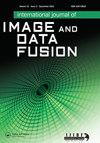沙特阿拉伯Shaqra和Tharmada省风成沙丘的反射光谱和ASTER制图:野外验证和实验室确认
IF 1.8
Q3 REMOTE SENSING
International Journal of Image and Data Fusion
Pub Date : 2022-05-01
DOI:10.1080/19479832.2022.2069160
引用次数: 1
摘要
风成沙丘粒度空间变异性及其制图对于研究沙蚀、输运和沙丘运动,以及了解沙丘侵蚀和土地退化具有重要意义。研究了17个新月形沙丘68个砂样的粒度统计参数和矿物学组成,并对这些沙丘的来源和沉积环境进行了评价。样品粒度分析结果表明,砂体粒度特征为细至细,平均粒度为2.28 Φ,分为中细分选(0.59 Φ)、中粗质(0.97 Φ)和细至粗偏(0.14 Φ)。x射线衍射表明,沙丘主要由石英、方解石和赤铁矿组成。在0.5、0.9和2.22 μm附近出现的吸收特征证实了沙丘中存在铁硅酸盐和铝硅酸盐矿物。利用ASTER卫星数据的TIR波段,利用碳酸盐指数(CI)和石英指数(QI)对各省的沙丘进行了制图。粒度分析、光谱测量、矿物学研究和沙丘制图结果与野外观测结果吻合较好,表明研究区沙质沉积在风成环境中具有多种来源。本文章由计算机程序翻译,如有差异,请以英文原文为准。
Reflectance spectroscopy and ASTER mapping of aeolian dunes of Shaqra and Tharmada Provinces, Saudi Arabia: Field validation and laboratory confirmation
ABSTRACT Spatial variability of grain sizes and mapping of aeolian dunes is important to study the sand erosion, transport, and dune movement and to understand the dune encroachment and land degradation. This study examines the grain size statistical parameters and mineralogical composition of 68 sand samples collected from 17 crescentic dunes and assesses the source and depositional environment of these dunes. The analyses of samples for grain sizes resulted that the sands are characteristics to fine with an average size of 2.28 Φ and classified as moderately well-sorted (0.59 Φ), mesokurtic (0.97 Φ), and fine to coarsely skewed (0.14 Φ). X-Ray Diffraction shows that the dunes are deposited mainly by quartz, calcite, and haematite. The occurrence of absorption features near 0.5, 0.9, and 2.22 μm confirm the presence of such iron and aluminosilicate minerals in the dunes. The dunes of the provinces were mapped using TIR bands of ASTER satellite data by Carbonate index (CI) and Quartz index (QI). A good agreement among the results of grain size analyses, spectral measurements, mineralogical studies, and mapping of dunes with the field observations suggests that the sand deposits in the study area have a diversity of sources in the aeolian environment.
求助全文
通过发布文献求助,成功后即可免费获取论文全文。
去求助
来源期刊

International Journal of Image and Data Fusion
REMOTE SENSING-
CiteScore
5.00
自引率
0.00%
发文量
10
期刊介绍:
International Journal of Image and Data Fusion provides a single source of information for all aspects of image and data fusion methodologies, developments, techniques and applications. Image and data fusion techniques are important for combining the many sources of satellite, airborne and ground based imaging systems, and integrating these with other related data sets for enhanced information extraction and decision making. Image and data fusion aims at the integration of multi-sensor, multi-temporal, multi-resolution and multi-platform image data, together with geospatial data, GIS, in-situ, and other statistical data sets for improved information extraction, as well as to increase the reliability of the information. This leads to more accurate information that provides for robust operational performance, i.e. increased confidence, reduced ambiguity and improved classification enabling evidence based management. The journal welcomes original research papers, review papers, shorter letters, technical articles, book reviews and conference reports in all areas of image and data fusion including, but not limited to, the following aspects and topics: • Automatic registration/geometric aspects of fusing images with different spatial, spectral, temporal resolutions; phase information; or acquired in different modes • Pixel, feature and decision level fusion algorithms and methodologies • Data Assimilation: fusing data with models • Multi-source classification and information extraction • Integration of satellite, airborne and terrestrial sensor systems • Fusing temporal data sets for change detection studies (e.g. for Land Cover/Land Use Change studies) • Image and data mining from multi-platform, multi-source, multi-scale, multi-temporal data sets (e.g. geometric information, topological information, statistical information, etc.).
 求助内容:
求助内容: 应助结果提醒方式:
应助结果提醒方式:


